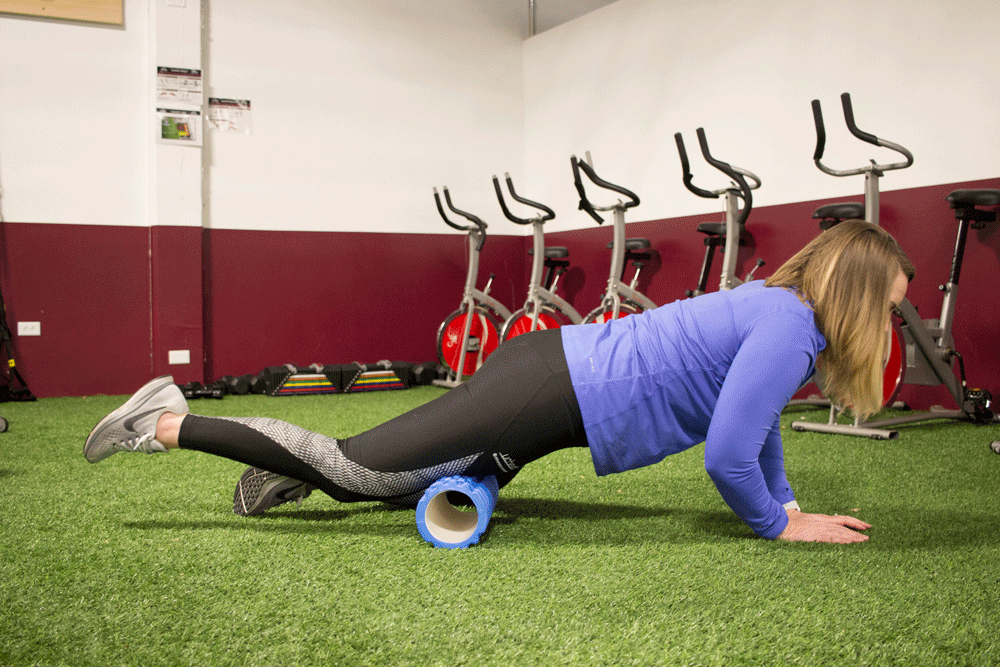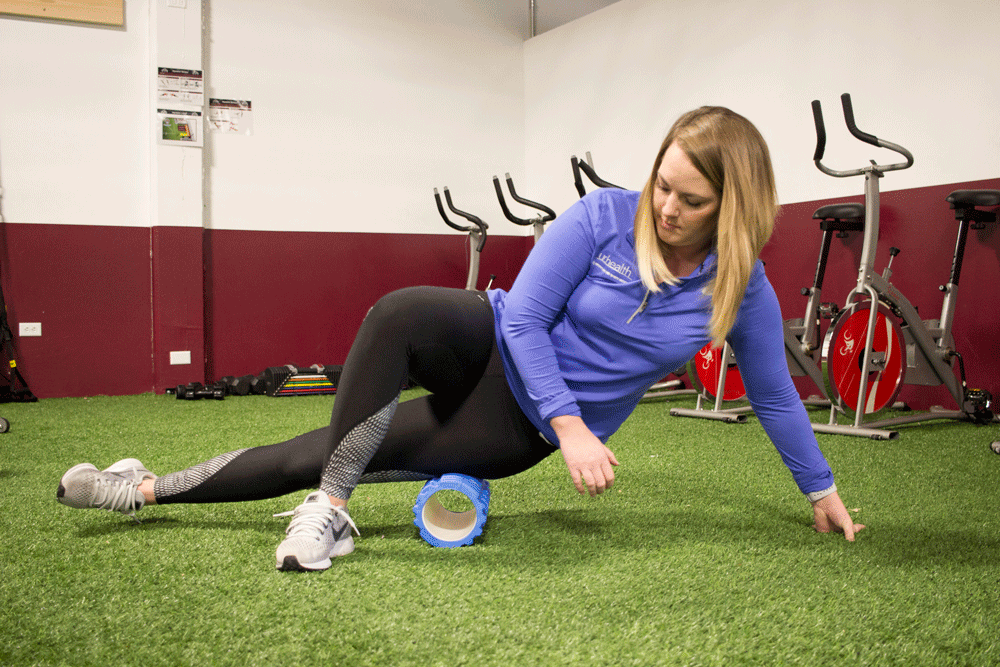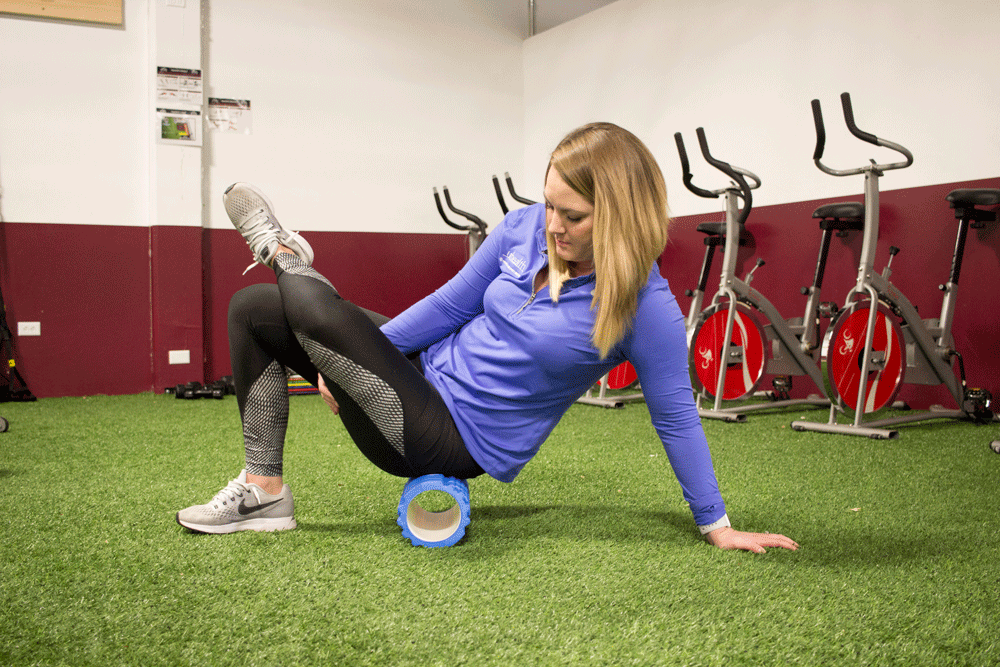Foam Rolling
Posted by: Julie Graves | Head Athletic Trainer
Benefits of Foam Rolling
Foam rolling is KEY to muscle recovery and rejuvenation. The purpose of foam rolling is to create flexibility in the muscle and mobility between the skin and the muscle. Between skin and muscle there is a layer of fibrous connective tissue called fascia. This connective tissue helps stabilize and anchor muscles, as well as other internal structures. Fascia is also between muscle layers and almost every organ in the body. When a muscle or surrounding soft tissue becomes irritated due to surgery, overuse, or injury the fascia becomes irregular and fascial adhesions may form between the skin and muscle or between muscle layers. These adhesions can modify mobility, range of motion, and can ultimately cause injury.
Foam rolling can help decrease these adhesions while increasing mobility and range of motion in the muscle that is being rolled out. There are also trigger points or “knots” that form in muscle due to a lack of blood flow to that area because of tightness. Foam Rolling will help release these trigger points to get the muscle working at its full capacity.
What Kind of Foam Roller Should I Use?
Foam rollers come in all shapes and sizes. The size only matters based on personal preference and travel convenience. There are also high density and low-density foam rollers. For beginners, start with the low-density foam roller so you can begin to mobilize the fascia/muscles being worked on without causing too much pain. Eventually, you will need to build up to the high-density foam roller so that the tissue is getting the most amount of pressure to release those adhesions/trigger points. Beware, foam rolling is not a comfortable thing to do and will be a little painful! That is normal. Ease into it by starting with a low-density foam roller and work your way up.
How To Foam Roll
- You will use your body and gravity to properly foam roll the tissue/muscle being worked on. The foam roller stays on the ground.
- All the lower leg muscles should be rolled out. That includes: the Quadriceps (front thigh muscles), IT Band (side thigh muscle/band running from your hip to your knee), Gluteus Maximus (that big muscle you sit on!), Hamstrings (back of the thigh muscles), Adductors (inner thigh muscles), Calves (back of lower leg muscles), and Peroneals (side of lower leg muscles).
- When rolling out and you hit a trigger point or “knot” (you will know because it will feel uncomfortable), stay on that point for at least 30 seconds or until you can feel it release and then continue rolling out slowly and controlled each muscle for at least 1-2 minutes per muscle group.
- A LAX ball, baseball, or softball is better for the calves as it is a smaller surface area.
You will use your body and gravity to properly foam roll the tissue/muscle being worked on. For soccer players, all the lower leg muscles should be rolled out. That includes: the Quadriceps (front thigh muscles), IT Band (side thigh muscle/band running from your hip to your knee), Gluteus Maximus (that big muscle you sit on!), Hamstrings (back of the thigh muscles), Adductors (inner thigh muscles), Calves (back of lower leg muscles), and Peroneals (side of lower leg muscles). When rolling out and you hit a trigger point or “knot” (you will know because it will be a sharp pain), stay on that point for at least 30 seconds or until you can feel it release and then continue rolling out slowly and controlled each muscle for 1-2 minutes per muscle group. Below are 3 examples of foam rolling exercises that would be beneficial to any athlete’s recovery cycle.
Rolling Quadricep Muscles

Rolling IT Bands

Rolling Piriformis Muscle

When To Foam Roll
Ideally, foam rolling should be done twice a day; before and after practice or morning and night. The benefits of foam rolling are more noticeable when you are using the roller to help with areas that are receiving a lot of use. If you are playing a sport, you have tight muscles in the groups you use on a consistent basis! The earlier you start foam rolling these areas the better! If you are rolling the correct areas, athletic performance, and recovery time will improve.
Find out more about the CRYSC Sports Medicine Program by visiting our website. For any question or concerns related to foam rolling, sports medicine, or athletic training, please reach out to the CRYSC Head Athletic Trainer, Julie Graves, at [email protected].









